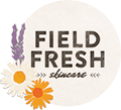
The relentless pace of an always-on, always-connected world can leave us actually feeling rather disconnected. Disconnected from others, and from nature, from our own core being.
One way to ground ourselves, bring back some natural balance and establish nature as a regular part of our daily lives is to use the natural ingredients that grow around us in our skincare.
For all of the mass-manufactured, chemical-based skincare products we commonly use today there is an effective, natural alternative. The task is find the alternatives that are right for you.
The quest is becoming simpler. As interest and demand grows, more people are sharing information, discovering together, and more products being developed to meet the needs of natural-seekers at each stage in their journey.
So what should you be aware of as you begin your quest in transitioning to a more natural approach to skincare?
Here are 5 steps to help you:
1. Step One: Define your terms
While the term ‘natural’ on a product may seem to offer what we’re looking for, it is in reality meaningless. There is no guidance as to what the term ‘natural’ can refer to so you’ll need to look further to know if the product is right for you.
As there is no standard definition, there’s plenty of scope for you to define your own terms. What will you accept in terms of testing, sourcing, skincare miles, use of animal products …?
Time to set your own standards.
2. Step Two: Know your ingredients
Once you’ve negotiated the hype on the front of the product, time to turn to the back and read the small print to know what’s really in it.
If you’re still getting used to the unusual names in an ingredients list, there are some pointers that even a brief scan will give you:
- Ingredients are always listed in quantity order (largest first) so the first ones on the list will be the most dominant. Which means, there may be a beautiful ingredient highlighted on the front of the product, but if it’s way down in the list, there won’t actually be much of it in the product; however, with some ingredients just a tiny amount can cause sensitivities
- If ‘aqua’ (water) is on the list, there will also be a preservative in the product. As many skin reactions are due to either the fragrance or the preservative, it’s good to start recognising if you’re sensitive to any particular types
- Many customer-responsive companies who are proud of making positive ingredients choices try to help us understand the ingredients list by including simpler-to-read names along with the legally-required INCI (international nomenclature of cosmetic ingredients) term. This ingredients honesty is helpful in making positive product choices.
Masquerades and misnomers:
- Some ingredients may have unfamiliar names, while actually being perfectly natural and good to use in cosmetics.
- Some ingredient names could raise alarm bells unnecessarily. An example of this is cosmetic ‘alcohols’. We may be wary of alcohol in a skincare context due to its drying effect, or we may be generally avoiding alcohol for faith or health reasons, but some ‘alcohols’ (such as cetearyl alcohol or cetyl alchohol) are entirely different.
- Some ingredients may appear good and natural, but still we can be sensitive to their means of production or sourcing. Palm oils are a long-known source of controversy, but other popular natural skincare ingredients are now coming under scrutiny such as essential oils and some carrier oils.
To learn more about some of the harmful ingredients to avoid, take a look at the resources provided alongside EWG’s Skin Deep CosmeticsDatabase
3. Step Three: Find your products
Once you’ve a good idea of what you’re looking for in a product – the compromises you will and won’t make – and the key things to check on the ingredients list, it’s time to search for your ideal product.
With particular needs in mind, you may become exasperated looking through the standard beauty aisles and departments, or taking your chances on a beauty box haul.
You’re more likely to hone in on what you need
- either by seeking among the Indie beauty brands who are consciously producing smaller-batches with specific care to ingredients and sourcing (google ‘indie skincare’ for the latest recommendations)
- or by sourcing your own ingredients and learning the simple techniques to freshly combine them and create the product you really need. Field Fresh Skincare One-Pot-Kits are a cost-effective way to begin your Blend-It-Yourself journey with everything you need provided in just the right quantity you can create fresh skincare in less than ten minutes, with no fuss and no waste.
It’s tempting to make wholesale change, eradicate all troublesome chemicals from our lives. But this is often too daunting, too huge or too difficult to achieve. Instead, think of the one or two products that you can really make a difference with. These may be something you use every day, or something where you are particularly concerned about the non-natural version and the effect it is having. Make this simple change your goal.
When you know the product(s) you want to make a difference with, first ask: ‘do I need this?, could I eliminate it entirely? is it necessary for the lifestyle I would like?’
If you’ve established a need, then think: ‘what do I need this product to do for me? And therefore what are its most important qualities?
A clear-minded approach to your own needs will help sift through the many beautiful packages and persuasive marketing to find your perfect product.
4. Step Four: Transitioning
We use our skincare products daily, they become part of our trusted routines, and even part of how we define ourselves. It’s a crutch that we can be reluctant to let go of. Change can be hard, especially when new things take a while to get used to, so it’s important to be doing it for the right reasons – our own reasons and desires – in order to transition successfully.
Taking a thoughtful approach to your skincare, understanding what you need it to do for you and how to achieve that, help you develop a focus and mindset that will carry you through the transition to natural.
Because it won’t always be simple. You’re not guaranteed to hit on the right product straight away, and you may have to change your routines a little to accommodate them. For example, layering natural oils can provide wonderful hydration and protection for dry skin, but you’ll need to allow a few minutes between application and getting dressed to let them sink in. Which may mean changing the order of routine morning tasks to make best use of that time.
The first thing to do with any product is a patch test. There’s more detail on that here.
Once you’re happy there are no immediate sensitivities, start bringing the product into normal use …
Make a conscious effort to use the product and think about it with each application …
It’s possible you may have quarms at first …
For example, putting an oily product onto oily skin can feel counter-productive, but give time for your natural oils to recognise the assistance you’re providing and gradually they’ll stop over-producing and balance will be restored …
Persist …
Especially in the case of products that require a change to your routine …
Remember it takes 66 days to establish a new habit …
Over time you’ll create a new normal that you’re happy with, that’s ‘your way’.
It’s likely to go one of three ways:
- Best scenario is that you love the product and make it a staple go-to
- A good scenario is that the product is just what you need on some occasions and you can build it into a repertoire of balancing, complementary products to use in cycle.
- Some products you’ll decide you just don’t get on with. But because you’ve chosen it thoughtfully and used it consciously, you will know exactly why it’s not your thing and can bring that information to you next, refined product choice.
Where you can, share your experiences – with friends and family, in online communities – so you get support and advice through your transitioning and can provide the help, encouragement and guidance that others need too. We need to make our own decisions about what’s right for ourselves, but we don’t need to fathom it all out alone. Documenting it can be fun too. It may be small steps but over time you’ll be able to look back on big, positive change.
5. Step Five: Living naturally
Just as there’s no standard definition as to what ‘natural’ means on a skincare product, so there need be no standard definition as to what ‘living naturally’ means for you. It’s down to our own interpretation.
Making natural lifestyle choices should bring you more in balance with the natural world, and with your own self. You should feel more confident about the decisions you’ve made and the conscious way in which you choose, use and dispose of products.
Quite possibly it will mean having less products, fewer things on the shelf, more made and used fresh as you need it. Your self-care approach can encompass the full experience of selecting ingredients, making products and using them with care. Meaning you become more aware of the resources around you and more in touch with your environment and its seasons.
The result will be obvious to all who know you. Glowing, healthy skin, a confident, radiant smile and evident thoughtfulness and care are the natural outputs of taking the time to really think about, understand and make positive changes to your skincare approach.

